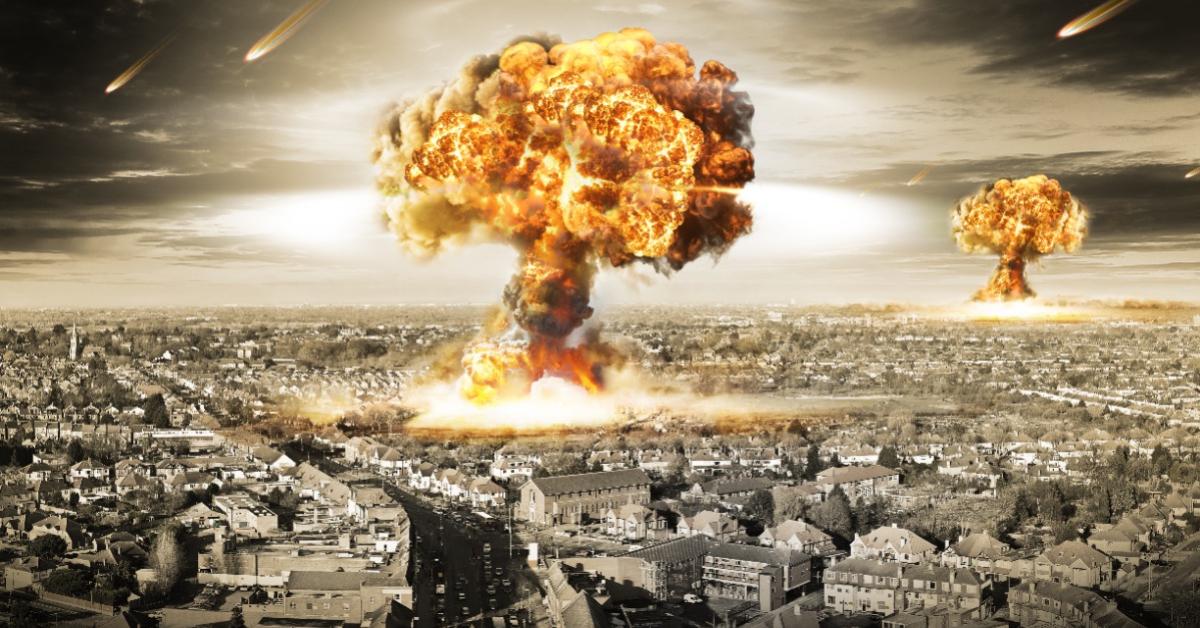
The world since 1900 has experienced two major world-encompassing wars. Wars cost a lot of money, and countries—even if they were once on a gold standard—usually start printing massive amounts of money to finance their wars. This fact can be seen in the United States Federal Reserve (Fed) liabilities, for which data is available from the time of its inception in 1914—or just before the beginning of World War I—to the present.*
If we look at the Fed liabilities taken from its published reports and normalize those dollars to 1914 dollars, then we get the following chart. The normalization was achieved using the Fed M2 money supply data for the years between 1959 and 2023. This means we are truly comparing “apples with apples.”
Figure 1: US Federal Reserve Liabilities on its balance sheet normalized to 1914 dollars (red curve)
Source: Liabilities data for 1916–2023 from the Board of Governors of the Federal Reserve System, statistical release H.4.1, Factors Affecting Reserve Balances of Depository Institutions and Condition Statement of Federal Reserve Banks, via FRED; and M2 money supply data for 1959–2023 from the Board of Governors of the Federal Reserve System, statistical release H.6, Money Stock Measures, via FRED. Note: The solid trend line (1) is a curve fit to the data between 1965 and 2003. The solid trend line (2) is a double exponential curve fit to the data after 2003. The two world wars are indicated by arrows pointing to the pink regions. Recessions are indicated by sepia-colored strips.
Figure 1 indicates that, due to the massive war spending, Fed liabilities expanded significantly up to 1920 and then from 1930 to 1946 while they contracted in the postwar periods. The triangle-shaped humps above the trend line (1) and labeled World War I and World War II indicate this fact. However, note that between these periods of massive money printing was the Great Depression of 1930–32. The liabilities dipped below the trend line (1) then.
Now looking at the period after 2000, we see again the liabilities dipped below the trend line, indicating the depression brought on by subprime mortgages in the global financial collapse. After this, the Fed massively began expanding its liabilities, which roughly follows the exponential growth indicated by trend line (2).
In 2014, the Fed began contracting its liabilities again until 2020, when the covid-19 pandemic started. Is it a coincidence that the war in the Donbas region of Ukraine between Russia and Ukraine also started in early 2014 after the overthrow of the democratically elected government of President Viktor Yanukovych via a US-backed coup? For this reason, on figure 1, we have drawn the start of a potential new world war (World War III) from that time.
If we take the real value of the expansion of the Fed liabilities between 1934 and 1963 due to World War II and compare it to the total liabilities from 2008 to 2023, we find the latter to be 2.3 times larger at its peak than in the case of World War II.
Couple this with the depression brought on by the global financial collapse from 2004 to 2008 just before the massive currency printing started in 2009 (i.e., quantitative easing QE1 followed by QE2, QE3, and QE4), does it indicate that we are already in World War III?
A comparison with World War I and World War II indicates also that the Fed started shrinking its balance sheet after the war was over, which make a lot of sense when the demand for war munitions and other wartime supplies is no longer needed.
Do we have the equivalent situation now?
The Fed has been aggressively expanding its balance sheet from 2020 after a period of quantitative tightening (QT) from 2014 to 2019. However, that latter QT was only because of the massive expansion under QE1 to QE3.
The second trend line, an exponential fit to the data after 2003, is indicated by the solid trend line (2). From this, we see that periods of QT have brought the Fed liabilities down to just touch this trend line (2). It is hard to see on this scale, but the monetary easing used to bail out Silicon Valley Bank, Signature, and the other banks in March also brought the liabilities up to this trend line (2) briefly before QT continued.
It seems that the Fed should be tightening (QT) and pulling its liabilities down to get back to trend line (1), when in fact, it is expanding (QE) on an upward exponential fashion along trend line (2).
Our question really is, as it follows from history, whether we can only expect aggressive QT to occur after the next world war is ended.
Currently, all the news indicates that the North Atlantic Treaty Organization (NATO)/Ukrainian war with Russia is being expanded. Joe Biden has ostensibly sent hundreds of billions of dollars in military assistance to the Ukraine already. Many of the European NATO countries are joining in supplying arms and money.
The rhetoric constantly grows stronger. Therefore, it would seem that this kinetic war needs to end before the Fed liabilities can be contracted back down to the trend line (1) indicated in figure 1. When will that happen? We don’t know. Ask Biden or whoever is running him?
A round of massive QT, with much higher bank savings rates, could do it. However, with the concomitant price inflation caused by all the massive QEs after 2009, this tightening would bring the world to financial Armageddon. You can see from the chart that the only way out for the Fed is to bring their balance sheet liabilities back down to the 1963 to 2003 trend line (1). At what cost though? More bank runs and bank collapses like what happened in March this year? However, it would seem that a kinetic World War III is inevitable if past wars are our teacher.
*. I would like to thank Rafi Farber of the End Game Investor for getting me started looking into this and for his valuable advice.





